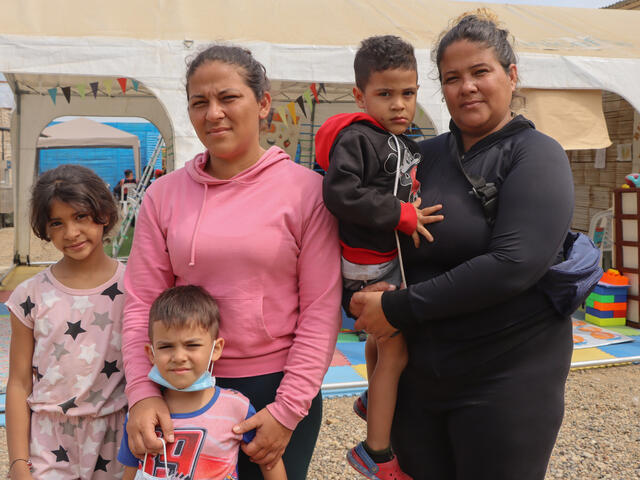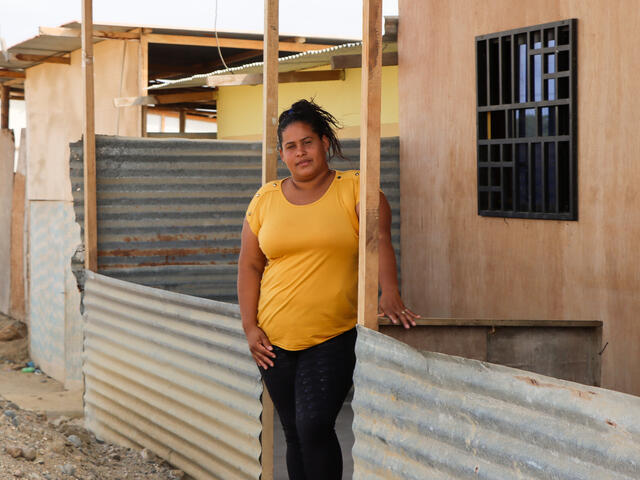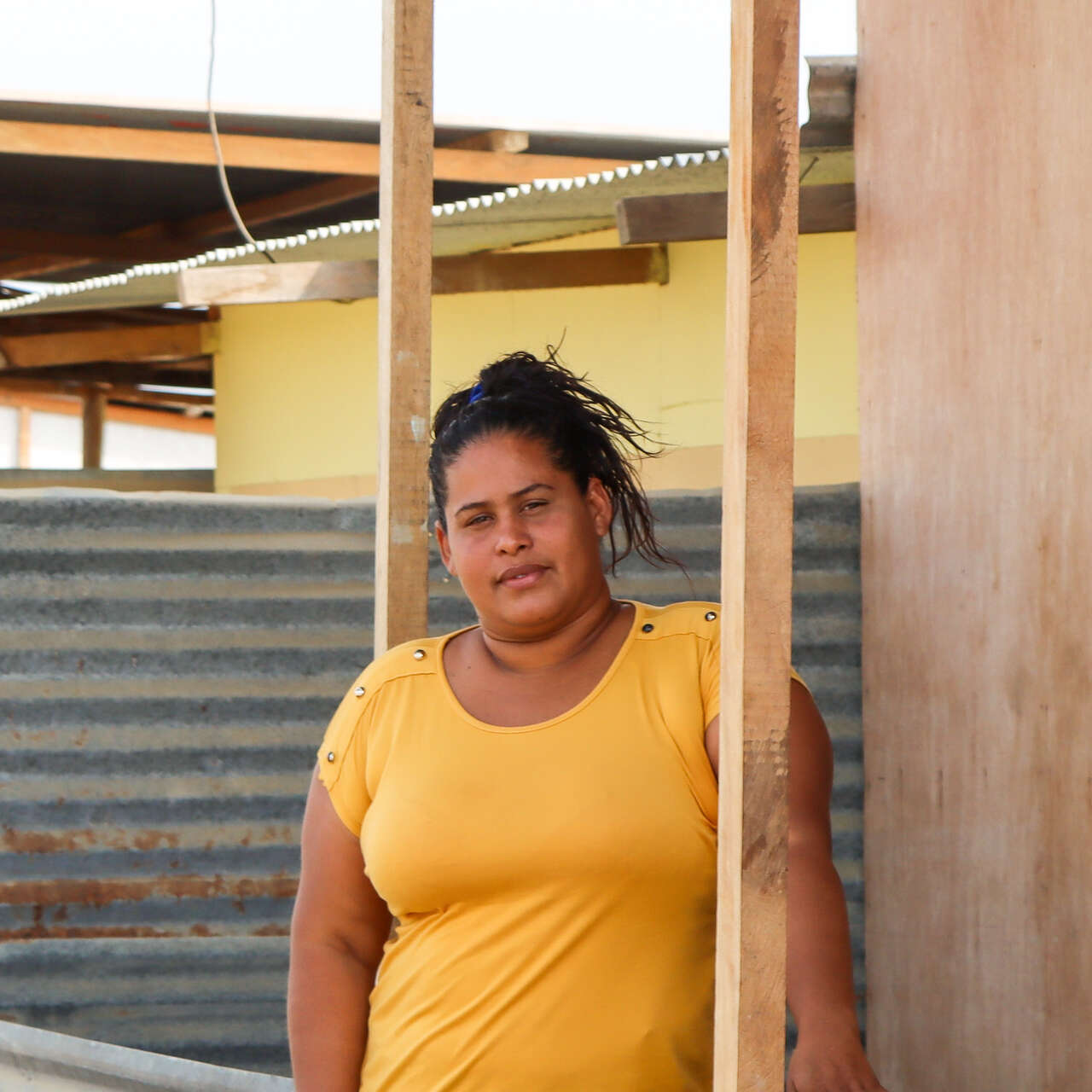Country facts
- Population: 33.7 million
- People displaced from Venezuela: 1.5 million
- Rank in Human Development Index: 84 of 191
IRC response
- Started work in Peru: 2022
For Venezuelans who are in transit or trying to rebuild their lives in Peru, finding alternatives to cover the most essential aspects of life is an everyday struggle, especially since during the past years living conditions have turned more challenging as a consequence of factors related to the pandemic.
After four years of supporting crisis-affected Venezuelans in Colombia, through local organisations in Venezuela, and expanding in late 2021 to Ecuador, the IRC has gained strong experience building technical and operational capacities with partners. The IRC is working in a mixed model in Peru, covering both direct implementation and work with partners to provide holistic and timely support to meet urgent needs of Venezuelans and their host communities as well.
Life continues to be extremely difficult for Venezuelans, even after arriving in neighboring countries like Peru, where approximately 1.5 million have tried to settle. Becoming the host country with the second-largest population of displaced Venezuelans in South America–just after Colombia–over the past years living conditions have turned more challenging as a consequence of factors derived from the pandemic.

The closure of Peruvian borders as a COVID-19 containment measure (which limited human mobility) and economic slowdown–that limited formal and informal work opportunities–have caused Venezuelans to struggle to afford basic needs like food and shelter. Staying healthy is another struggle, as many live in overcrowded, often substandard housing and many more have no option but to live on the streets.
Peru, just like other countries hosting Venezuelans, has received insufficient support from donor countries and international agencies. A historically underfunded United Nations humanitarian response plan for the Venezuela crisis, and already overstretched national systems, are putting more pressure every day on the country’s capacity to respond.
National systems are overstretched in Peru and both Venezuelans and Peruvians face great barriers to cover their most urgent needs. In late 2021, the IRC carried out an assessment to identify the most critical needs of Venezuelans in Peru, as expressed by representatives of 900 families.
The assessment–which informed the development of the IRC’s response in the country–revealed that financial support was the main need, as listed by 71% of people. Most families reported not being able to cover their current expenses, even if at least one of their members was working–with at least 4 in every ten working in informal jobs. The average family income in the week before the interview was extremely low, at US $79, when the poverty line in Peru back then was at US $88. Of the surveyed Venezuelans, almost half were living below this line.
Lacking financial support echoed in other needs expressed by the families, including food, which was the second aspect most mentioned. At least 1 in 4 people declared they resorted to coping strategies like begging, asking neighbors and relatives for support, searching for humanitarian assistance or going to soup kitchens. In fact, it was diagnosed that, in the Reduced Coping Strategies Index (RCSI), surveyed families averaged a score of 14. A score above 10 is already considered as “severe coping”.
![Luisa was diagnosed with diabetes when she was still living in Venezuela. She could not get access to the treatment she needed, which was one of the reasons why she decided to leave. Once she arrived in Peru, she found more obstacles to get medicines: “Health care [in Peru] is private and, if you don’t have money to pay for it, you cannot get access.”](/sites/default/files/styles/landscape_4x3_640px_wide/public/2023-07/20220831%20Peru%20CMontanez%20WPE%20psychosocial%20support%2007-1200x800-5b2df79.jpg?h=ba864a4e&itok=NLoFtNjo)
In addition to financial support and food, Venezuelan families also expressed needing assistance in relation to health care. Access to medicines and overall to health services were the third and fifth most mentioned needs respectively. Emergency services, attention to children under the age of five, as well as to pregnant women and mothers up to 42 days after giving birth are provided to those who can deliver some form of identification under the Integrated Health System, but only those with a specific type of residency card can access the system for other needs. It is estimated that only 10% of Venezuelans in Peru meet this criterion.
Peru has been historically affected by the effects of climate change. More recently, during the first months of 2023, heavy rains related to El Niño Costero phenomenon in Peru have caused a series of emergencies, including floods and landslides. It has been estimated that, by the end of March, over 134,000 people had been affected. These weather events have been linked to the worst dengue outbreak on record. Most of the deaths have occurred in northern Peru, where hospitals have exceeded their capacity, bringing back recent memories of the health crisis suffered by the country during the coronavirus pandemic.
The IRC’s mission is to help people whose lives and livelihoods are shattered by conflict and disaster to survive, recover and gain control of their future.
The IRC started operations in Peru in early 2022, focusing on groups of people who are most at risk of morbidity and mortality, including pregnant and lactating women, girls, adolescent girls and boys, unaccompanied and separated children, the elderly, people living with disabilities and members of the LGBTQ+ community. The response is being implemented in Tumbes, Piura and Lima, with four lines of action:
- Health: primary care, which includes access to check-ups and medicines; mental health care; sexual and reproductive health care, such as contraceptive methods, treatment of sexually transmitted infections and prenatal attention (laboratories and obstetric ultrasounds); and orientation on how to enroll into the health insurance.
- Women’s protection and empowerment: case management and psychosocial support for women who are survivors of gender-based violence (GBV), as well as creation of safe spaces and organization of violence prevention workshops.
- Children’s protection: case management and psychosocial support for children who experience some form of neglect and workshops focused on prevention of abuse, violence and mendicancy.
- Economic recovery and development: financial support to help people address their basic needs (food and shelters).
After the recent climate-related affectations, the IRC conducted a rapid assessment to evaluate pressing needs of communities impacted by the floods and landslides. The assessment revealed that medical assistance, access to water and food and transportation were among the main needs expressed by Venezuelan and Peruvian families. Based on these insights, the IRC launched an emergency response in partnership with a local NGO to support access to temporary shelter, in-kind dry food and multipurpose cash assistance, which allows people to decide how to cover their priority needs.

Despite being one of the largest external displacements in the world, the Venezuelan crisis does not get as much attention and is one of the most underfunded. Humanitarian funding for the Venezuela crisis has consistently fallen short. Despite promising steps by donor countries (including the largest donor, the United States) less than 35% of the aid pledged in 2022 was actually covered.
Neighboring countries such as Colombia, Ecuador and Peru have taken on the responsibility of hosting displaced Venezuelans with dwindling global solidarity and support. Asylum systems across Latin America are already at capacity as they contend with multiple overlapping humanitarian crises. At the same time, contrasting approaches among countries responding to the arrival of Venezuelans, overstretched government services, and the impacts that the COVID-19 pandemic left on aspects such as the economy and public services are putting further pressure on their capacity to respond.
The IRC is actively working to promote durable solutions, with an approach to bridge humanitarian needs with long-term development opportunities and sustained results. There is a greater need, however, for governments of host countries to be able to access a mixture of both development and humanitarian funding to adequately meet the needs of Venezuelans and their own citizenry.
